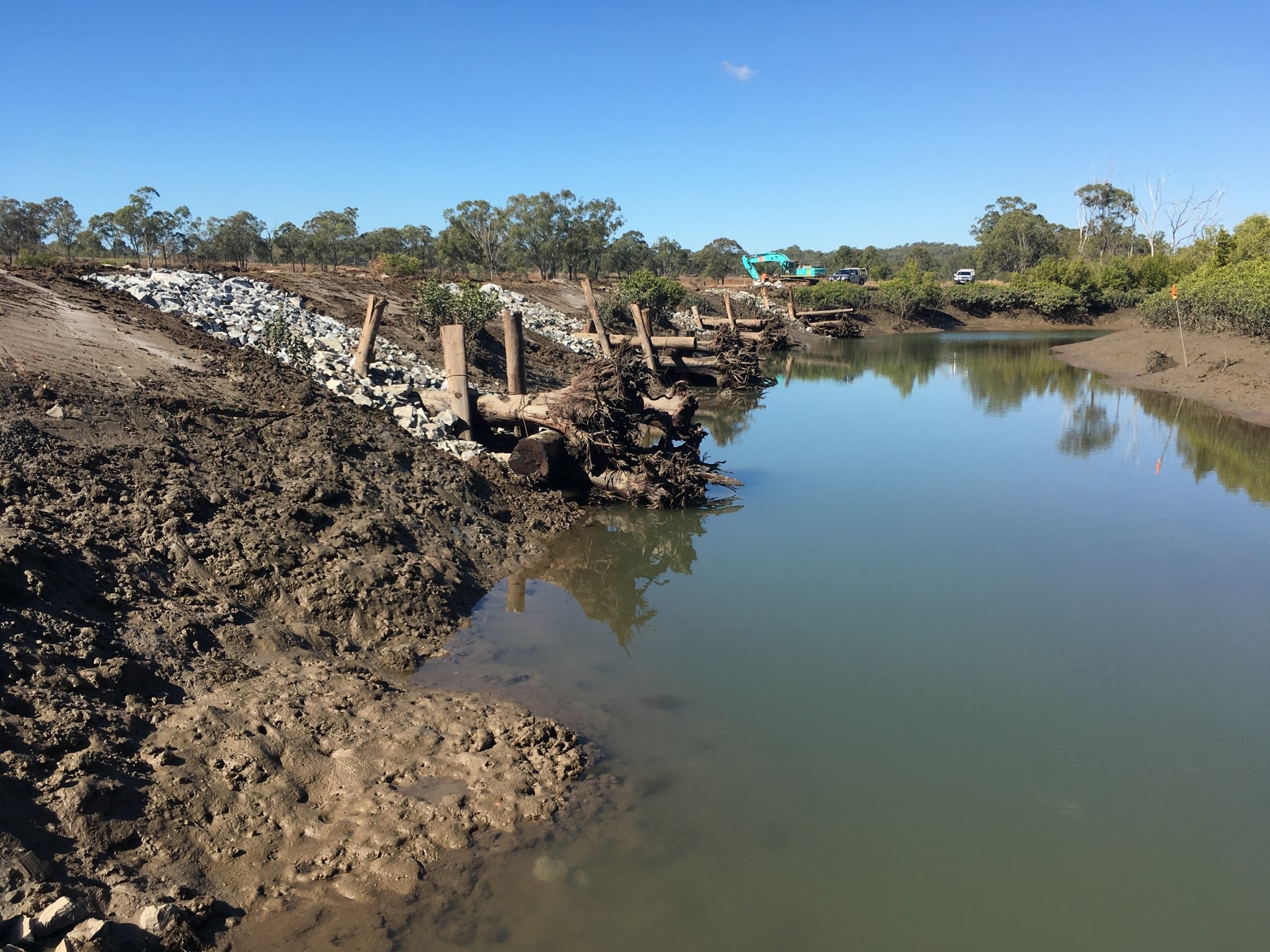150 tonnes of hardwood set to stop river erosion in Gladstone
Jul 2, 2019
Scientists have engineered 150 tonnes of salvaged hardwood into ‘log jam’ structures to halt heavy erosion in Clyde Creek, Gladstone. It is the first time the novel environmental solution has been used in the area. And while log jams have been used in freshwater rivers previously, this could be the first successful attempt to install…

Scientists have engineered 150 tonnes of salvaged hardwood into ‘log jam’ structures to halt heavy erosion in Clyde Creek, Gladstone.
It is the first time the novel environmental solution has been used in the area.
And while log jams have been used in freshwater rivers previously, this could be the first successful attempt to install them in a tidal estuary in Queensland.
Five of the structures – each made up of 17 hardwood logs and weighing 25 to 30 tonnes – were lowered into Clyde Creek 10 months ago.
Aquatic ecologist Matt Moore (environmental consultancy Catchment Solutions), said the Clyde Creek bank had been retreating at an alarming rate of 0.25 metres each year.
The log jams combat erosion, and are designed to deflect water away from the river bank back into the centre of the water course.
Habitat for fish species
In a triple-barrelled win, they also provide habitat for key recreational fish species like barramundi and mangrove jack; and give marine plants such as mangroves a chance to rehabilitate.
“The log jams give the creek bank a break. Previously, when fast water hit the bank in Clyde Creek, it was eroding badly, dropping sediment into the creek and out to sea. This solution benefits both the local waterway and ultimately the wider marine system. It means less pollutants washed out.”
Mr Moore said installing the log jams had been a stick-by-stick engineering feat in a tidal zone.
“We were racing against the tide to get the log jams in, with cranes and excavators on site.
“On a tidal flat, we can’t use machinery that is too heavy. The process is called stick building – we had a crane putting the logs into position one-by-one before the tide came back and washed us out!”
The log jams are five-storey engineered structures, about 3 metres high, with the logs arranged in a criss-cross pattern.
“We sourced salvaged native hardwood, that would otherwise have been wood-chipped or burnt,” Mr Moore said.
The natural ‘root ball’ ends of the logs were also kept attached as habitat structures for key fish species.
“Juvenile and adult fish can use the structures for protection from predators and currents and in turn this will be a real bonus for keen local fishers in the future!” Mr Moore said.
“The root balls provide ideal fish habitat where species like barramundi and mangrove jack can live and breed.
“It meant a lot more work was involved when extracting the salvaged trees, but we know fish love to take refuge in tree roots, and are attracted to them.
The log jams will also give marine plants such as mangroves a chance to recruit and re-establish. The local mangrove population will be monitored for improvements ahead.
Mr Moore said he was now keen to see the habitat structures replicated in other tidal estuaries and rivers across the state.
This project has been funded by the Queensland Government through the Department of Agriculture and Fisheries as part of offsets funding. The Engineered Log Jams were constructed by Catchment Solutions.